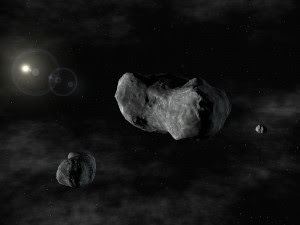Discovery date 24 August 1867 Alternative names 1949 QN2, A902 DA Discovered 24 August 1867 Asteroid family Gefion family | Minor planet category Main belt Orbits Sun Discoverer James Craig Watson | |
 | ||
Moons S/2009 (93) 2, Aegis, S/2009 (93) 1 Similar James Craig Watson discoveries, Other celestial objects | ||
93 Minerva (/mᵻˈnɜːrvə/ mi-NUR-və) is a large trinary main-belt asteroid. It is a C-type asteroid, meaning that it has a dark surface and possibly a primitive carbonaceous composition. It was discovered by J. C. Watson on August 24, 1867, and named after Minerva, the Roman equivalent of Athena, goddess of wisdom. An occultation of a star by Minerva was observed in France, Spain and the United States on November 22, 1982. An occultation diameter of ~170 km was measured from the observations. Since then two more occultations have been observed, which give an estimated mean diameter of ~150 km for diameter.
Satellites
On August 16, 2009, at 13:36 UT, the Keck Observatory's adaptive optics system revealed that the asteroid 93 Minerva possesses 2 small moons. They are 4 and 3 km in diameter and the projected separations from Minerva correspond to 630 km (8.8 x Rprimary) and 380 km (5.2 x Rprimary) respectively. They have been named Aegis and Gorgoneion.
